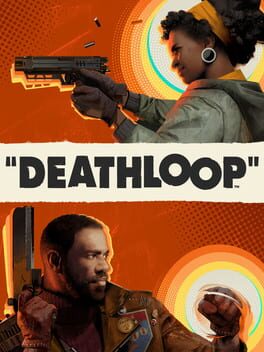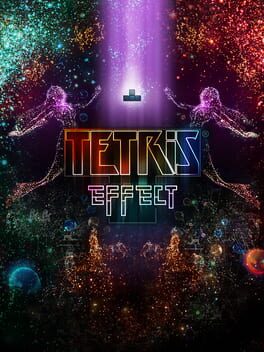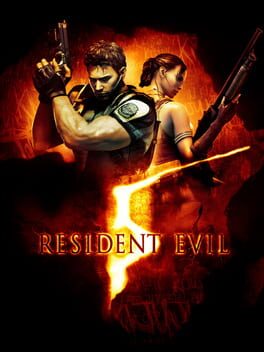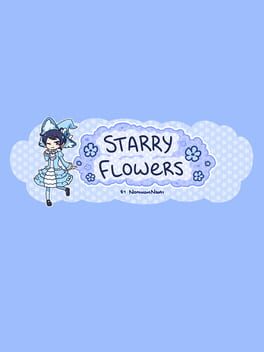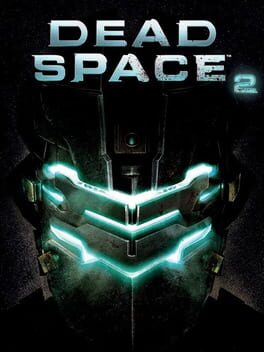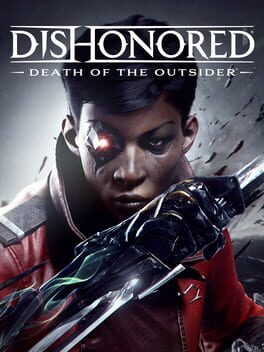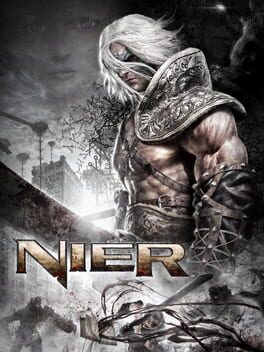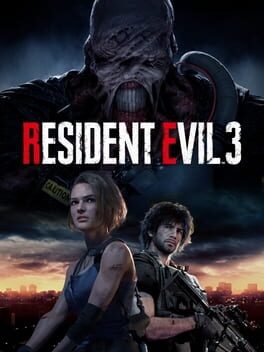kosmzone
2021
This review contains spoilers
I will forever be impressed that when Bethesda told Arkane to stop making immersive sims, it appears that Arkane went and said “How about we do anyways?” There are compromises to be certain, but for my money, the majority of these compromises were to Deathloop’s benefit. The easy combat allows for freeform experimentation and on-the-fly thinking, which works in tandem with the stringent, stingy save system to make utilizing the dashes, slides, kicks, powers, and tools a thrilling affair. Furthermore, having the note-reading and email sleuthing that defines the genre all contribute toward a clearly defined goal is a brilliant structural decision, satisfying both narrative curiosity and ludic priorities in one fell swoop. While not as liberating as contemporaries such as Hitman and Outer Wilds, Deathloop is still a fantastic example of utilizing repetition in level design to develop competency and mastery alike, and how inventive structure can facilitate dynamic and thrilling play.
However, if there’s an element dragging Deathloop down, it’s the terrible story. To be certain, the story has some excellent component parts. The sense of style and flavor, the worldbuilding, and the surface-level characterization are all delightful and distinctive. However, when you dig into the story’s core; the character motivations, and the central conflict, it’s a disaster. The primary problem is the withholding of Colt’s motivation until a few sentences are revealed in the final cutscene, which saps the story of a tangible conflict to invest in. Connected to this is the bizarre plot twist that Colt is Julianna’s father, which I had held out hope would be retconned as a parody of Bioshock Infinite. This twist robs the game of its flirtatious fun banter and left a gross taste in my mouth, especially since my game occasionally kept giving me randomized dialog where Colt sexualizes Julianna after the twist. Worse yet, from this vector of the plot emerges troubling subtext where the story twists itself into knots in order to create a situation where Colt can murder her daughter every day for her own good. When finally Colt articulates that he wanted Julianna to be free of the time loop so she can grow as a person, the nobility of this goal only comes across as abuse apologia, which wouldn’t be so bad if the game was actually interested in confronting and dramatizing this aspect of Colt’s character instead of tacitly justifying it. As much as I do love the rest of the game surrounding this element, as indicated by the high score I’ve given it, I can't help but be immensely frustrated at it and increasingly yearning for the day when Arkane’s stories are finally on par with their worlds.
However, if there’s an element dragging Deathloop down, it’s the terrible story. To be certain, the story has some excellent component parts. The sense of style and flavor, the worldbuilding, and the surface-level characterization are all delightful and distinctive. However, when you dig into the story’s core; the character motivations, and the central conflict, it’s a disaster. The primary problem is the withholding of Colt’s motivation until a few sentences are revealed in the final cutscene, which saps the story of a tangible conflict to invest in. Connected to this is the bizarre plot twist that Colt is Julianna’s father, which I had held out hope would be retconned as a parody of Bioshock Infinite. This twist robs the game of its flirtatious fun banter and left a gross taste in my mouth, especially since my game occasionally kept giving me randomized dialog where Colt sexualizes Julianna after the twist. Worse yet, from this vector of the plot emerges troubling subtext where the story twists itself into knots in order to create a situation where Colt can murder her daughter every day for her own good. When finally Colt articulates that he wanted Julianna to be free of the time loop so she can grow as a person, the nobility of this goal only comes across as abuse apologia, which wouldn’t be so bad if the game was actually interested in confronting and dramatizing this aspect of Colt’s character instead of tacitly justifying it. As much as I do love the rest of the game surrounding this element, as indicated by the high score I’ve given it, I can't help but be immensely frustrated at it and increasingly yearning for the day when Arkane’s stories are finally on par with their worlds.
2021
A tad slim but sheenly polished in return. That second quality winds up critical to the dating part of this game, as, like many games in the genre, Boyfriend Dungeon is deeply affirmative in its convictions of flattering the player, but it's so confident in its style you almost start to believe it. Unfortunately, that first quality I mentioned also hurts the dungeon diving part of the game, and I wound up wishing the game had a third dungeon while I was quickly grinding out max rank for all of my dates, although future players won’t have to deal with that once they patch in the extra content.
I had heard that this game flubbed its ace/aro representation and as an ace person, I would agree that it feels as though it was implemented in a haphazard way but I don’t feel that the small moments where it slipped up significantly impacted my experience. Boyfriend Dungeon was aiming to be a positive and validating experience through and through, and I believe that effort certainly shone through.
I had heard that this game flubbed its ace/aro representation and as an ace person, I would agree that it feels as though it was implemented in a haphazard way but I don’t feel that the small moments where it slipped up significantly impacted my experience. Boyfriend Dungeon was aiming to be a positive and validating experience through and through, and I believe that effort certainly shone through.
2018
It’s well known that Tetris is a masterpiece of the art form, and Tetris Effect certainly doesn’t do anything to mess up that formula. My criticisms instead lie with how this version executes its attempts to differentiate itself from other Tetris games on the market, with the effort to make Tetris into a sensory experience. The themed maps are often bland, in both virtual and rectangle reality, showing the player such exciting sights as a bunch of hot air balloons, and only a handful of maps have the vocalized songs that are supposed to prompt emotions in the player. Furthermore, the added sensory information in the maps that are cool doesn’t add much when I’m zoned in on surviving the onslaught of fast-falling blocks or just zoning out to a podcast. So the distinguishing elements don’t add much to the impeccable base layer but hey, at least as far as Tetris games on Steam go, at least this one was made by Ubisoft.
-Version Played: Connected
-Version Played: Connected
2009
Resident Evil 5 is an interesting case of a game where the various component parts consist of wildly varying quality. The sublime combat of RE4 is ported over basically untouched, with the added thrill of being able to save your friend’s neck from the blades of a chainsaw with a well-placed, high-powered bullet, and the thrill of being saved in turn. The precision pacing of previous titles also returns, however, the set-pieces are engineered towards the goal of providing interesting co-op dynamics rather than being memorable moments on their own, which drains the flow of much of its excitement residual. Most noxious of all is that the game uses imagery that wouldn’t feel out of place in the montage at the end of Spike Lee’s Bamboozled, which regardless of the intent or integrity of the developers themselves, is just plain uncomfortable and off-putting. Put together, Resident Evil 5 adds up to an undeniably fun co-op experience but does not add up to what could be charitably be described as a good game.
-Version Played: Gold Edition
-Version Played: Gold Edition
2021
Without many aspects of gameplay or choice, Starry Flowers is left to stand as a Visual Novel based on the merits of its art and writing, and in those departments, it shines brilliantly. Periwinkle and Pastille are delicious romantic protagonists, whose immediate, surface character traits bounce off each other in entertaining fashion, but also have deeper internal conflicts guiding those traits that the story digs into in heartwarming fashion. Additionally, the space that this game carves out for feminine masculinity is truly valuable, providing a vision of gender liberation that I’m eager to see more media explore. The cherry on top is the remarkably clean and cute artstyle, which packages these ideas in an impressively lush format for a 1-person production. I’m hoping that this game gets more attention here on backloggd because it has certainly earned it.
EDIT: The creator of this game, nomnomnami, has been involved in a scandal where it was revealed that she was in an online romantic relationship with a minor. While I do not feel it is necessary to punish her more than she already has been, I do think that people should be aware of the situation. You can read the associated documents explaining the situation here -> https://docs.google.com/document/d/1DTaVVam0CYZoAoToSAcZbkgUqYMy4mb_zF8yShA-kcw/edit
EDIT: The creator of this game, nomnomnami, has been involved in a scandal where it was revealed that she was in an online romantic relationship with a minor. While I do not feel it is necessary to punish her more than she already has been, I do think that people should be aware of the situation. You can read the associated documents explaining the situation here -> https://docs.google.com/document/d/1DTaVVam0CYZoAoToSAcZbkgUqYMy4mb_zF8yShA-kcw/edit
2011
There’s a scene in this game set in a Unitology Church where you encounter a room with a sign over the door that from the outside reads “Indoctrination Session in Progress.” This brand of cloying unsubtly is the biggest weakness of Dead Space as a franchise, transforming any sense of horror or dread into mere overstimulation. Furthermore, the combat also lacks the finely tuned balance of the third person Resident Evil games it so brazenly imitates. Whereas RE4 uses contextual attacks to give limb shooting a tactical risk-vs-reward and RE2 Remake had "they just keep coming!" thrills as their arms and legs are blown off, the damage model for the limb based shooting in these games means that enemies unsatisfyingly crumble as you plug away at shooting parts of their body with considerably large surface areas. Still, Dead Space 2 at least stands out for its suburb pacing, dishing out remarkable setpieces regularly alongside an otherwise solid gameplay loot of combat and collecting. The final levels in particular are fantastic, featuring the scariest Nemesis enemy in one of these games that put the thrills into overdrive and left me feeling satisfied with the game despite its weaker elements.
Given how sharp the Dishonored formula is, I found it a little surprising to feel the onset of diminishing returns just three games in. I suppose the main failing is that Arkane’s willingness to explain their worldbuilding and their ability to actually deliver compelling stories in that world are wildly mismatched; we have to access troves of exposition that isn’t going anywhere in particular. As such, the gameplay has to shoulder the main responsibility to not just create a new level pack instead, and some of Arkane’s choices here feel like arbitrary ways of spicing things up, such as the changes to Dishonored 1’s excellent mobility power, Blink. Still, performing possessions with Semblance and gathering intel with Foresight are at least novel enough, and the base formula is good enough that the diminishing returns aren’t too bad, I just felt that there was little in this expansion that lingers with me once the joy of playing it in the moment has run out.
Marvel’s trend of having their Black heroes fight against activist POC in their big-budget debuts is becoming increasingly concerning, but while its politics were anemic, the amount of care and detail into portraying Miles Morales as a character striving and thriving in a lived-in and vibrant Harlem was rather commendable. In relation to the base game, the new venom powers are a welcome addition to the combat, providing another tactical layer for both quick takedowns and crowd control. Stealth, however, has been completely gutted, with several features removed without adequate replacements, unless there was something buried in one of the upgrade menus that I tried to spend as little time as possible in. Certainly a solid launch title but nothing particularly special overall.
2010
I was thoroughly invested in this game the moment I walked out of my house for the first time. Sure there was a tad too much bloom in the visual style, but the soothing neo-medieval pastoralism on display made me immediately invested in the world and its inhabitants, and it was that investment that carried through me much of Nier’s infamous fetch quest side quests and repetition-based story structure. Simply existing in this world where ruins of our present world lie forgotten and humans are able to find joys and pleasure even amongst a beleaguered and besieged existence is a pleasantry onto itself.
More specifically a focus in the story, however, is the manner in which Yoko Taro mostly manages to min/max anime melodrama, allowing for character beats and plot twists that hit because of the earnestness of which they are presented. Emil’s arc lands the hardest, the inversion of his lethal gaze being traded for fearing the gaze of others being a ripe subject for tragedy, as well the bond that this experience forges with his friends. Kaine’s material is good as well but the fetishistic lens that is applied to her character undermines it somewhat. The least successful aspect of this game’s story is the manner in which the cast will sometimes behave as they are written to be Krombulus Michael, with vengeance-focused diatribes that may as well have the characters say “Oh boy, here I go killing again!” It’s a stylistic approach where the melodrama works to underserve the big emotions at play, where a more subtle tact would have allowed things better room to believe. Combined with the wonkiness of the multiple endings, which drag out the story’s true payoff slightly past its expiration date, and it feels like some of Nier Gestalt’s potential was ultimately squandered. As such, it is perhaps more important as a historical artifact than as a great game itself, but it remains a great game nonetheless.
More specifically a focus in the story, however, is the manner in which Yoko Taro mostly manages to min/max anime melodrama, allowing for character beats and plot twists that hit because of the earnestness of which they are presented. Emil’s arc lands the hardest, the inversion of his lethal gaze being traded for fearing the gaze of others being a ripe subject for tragedy, as well the bond that this experience forges with his friends. Kaine’s material is good as well but the fetishistic lens that is applied to her character undermines it somewhat. The least successful aspect of this game’s story is the manner in which the cast will sometimes behave as they are written to be Krombulus Michael, with vengeance-focused diatribes that may as well have the characters say “Oh boy, here I go killing again!” It’s a stylistic approach where the melodrama works to underserve the big emotions at play, where a more subtle tact would have allowed things better room to believe. Combined with the wonkiness of the multiple endings, which drag out the story’s true payoff slightly past its expiration date, and it feels like some of Nier Gestalt’s potential was ultimately squandered. As such, it is perhaps more important as a historical artifact than as a great game itself, but it remains a great game nonetheless.
2019
An exploration of the anxieties of becoming a father in a broken world and facing the inevitability of the end portrayed through a story where the interim President is named Die-Hardman and you can piss on ghosts to avert nuclear catastrophe. Hideo Kojima is known for his many eccentricities, and they are sure to delight and frustrate in each of the games he directs, the only question is how the overall experience balances each emotion.
I can say that the gameplay of Death Stranding is thoroughly weighted towards the former, as it manages to make the moment-to-moment gameplay of walking around so engrossing that I refused to listen to podcasts while playing, a feat that even some of my favorite games such as Sekiro and Hollow Knight could never achieve. The game is able to achieve this by making traversal both tactical and tactile; the environment has a number of hazards that could screw up your whole day, making even stray rocks a danger in the right circumstances. At the same time though, the player is provided with a number of tools to overcome these obstacles, which are smartly balanced into the weight system, which in turn feeds into the excellent physics system. Furthermore, while the BTs and Mules wouldn’t be able to carry a compelling game on their own, they provide a vital rhythm to the gameplay loop. Put together, these systems form one of the most unique and rewarding play experiences in a big-budget title in the past several years.
While the gameplay and narrative are more ideologically aligned than most games, Kojima’s love of escalating and compounding plot twists saps the narrative of a substantial amount of its emotional power. It’s hard to feel strongly about something when you’re trying to puzzle together not only what is happening but also how your new understanding fits with your old understanding, which is in turn materially different from your initial understanding. Unlike Metal Gear Solid 2 where the spiraling exposition dumps contribute a great deal to its intended horror of incomprehension, the lack of clarity leaves Death Stranding short of the masterpiece it could have been. Still, it all manages to fit together decently well in the end and the cutscene direction is perhaps the best in the industry thus far, serving a more than welcome return to form after the single-take blunder of MGSV, and Yoji Shinkawa’s eye for haunting imagery and design work is as strong as ever. Far from perfect, but nonetheless a noteworthy trailblazer in the AAA space.
I can say that the gameplay of Death Stranding is thoroughly weighted towards the former, as it manages to make the moment-to-moment gameplay of walking around so engrossing that I refused to listen to podcasts while playing, a feat that even some of my favorite games such as Sekiro and Hollow Knight could never achieve. The game is able to achieve this by making traversal both tactical and tactile; the environment has a number of hazards that could screw up your whole day, making even stray rocks a danger in the right circumstances. At the same time though, the player is provided with a number of tools to overcome these obstacles, which are smartly balanced into the weight system, which in turn feeds into the excellent physics system. Furthermore, while the BTs and Mules wouldn’t be able to carry a compelling game on their own, they provide a vital rhythm to the gameplay loop. Put together, these systems form one of the most unique and rewarding play experiences in a big-budget title in the past several years.
While the gameplay and narrative are more ideologically aligned than most games, Kojima’s love of escalating and compounding plot twists saps the narrative of a substantial amount of its emotional power. It’s hard to feel strongly about something when you’re trying to puzzle together not only what is happening but also how your new understanding fits with your old understanding, which is in turn materially different from your initial understanding. Unlike Metal Gear Solid 2 where the spiraling exposition dumps contribute a great deal to its intended horror of incomprehension, the lack of clarity leaves Death Stranding short of the masterpiece it could have been. Still, it all manages to fit together decently well in the end and the cutscene direction is perhaps the best in the industry thus far, serving a more than welcome return to form after the single-take blunder of MGSV, and Yoji Shinkawa’s eye for haunting imagery and design work is as strong as ever. Far from perfect, but nonetheless a noteworthy trailblazer in the AAA space.
2020
I was delighted most of the time while playing Astro’s Playroom but I couldn’t help but be concerned as well. How, I wondered, will we see these technologies applied in the future? Will the Dualsense’s haptic feedback be used to make purchasing loot boxes more satisfying. To further fine tune skinner box design? Will Sony continue to destroy their own history to sell a silver of it back to us, as they do here with the cute but empty references? Still, those are some mighty fine pretty graphics and the game feel is indeed quite satisfying. So I guess it’s a good time overall!
2011
While Sekiro has better combat, Titanfall 2 has better pacing, and Uncharted 2 has better setpieces, I'd be hard-pressed to name a game that does all three so well in one package. From the bubble-wrap level satisfying pop of headshots to the deliberate and easily readable animations, to the perfectly balanced inventory and resource management, to the wild escalation and variety of areas and scenarios, everything in this game is perfectly balanced to deliver rapid-fire tension and catharsis. While said tension is nowhere near as potent as in, say, RE1, this game's ability to consistently deliver it is sublime.
I will say that because I am a weird pervert who enjoys reading into the subtext of Resident Evil games for some reason, this entry is disappointing, as the Team America: World Police-esque tone tacitly endorses imperialism even as it gives it a gentle ribbing. Still, the B-Movie camp humor is such a delight that it doesn't affect my opinion of the game since it's so hard to take seriously, I just think it's worth pointing out.
Nonetheless, it remains easy to see why RE4 changed the industry; it's just that damn good.
I will say that because I am a weird pervert who enjoys reading into the subtext of Resident Evil games for some reason, this entry is disappointing, as the Team America: World Police-esque tone tacitly endorses imperialism even as it gives it a gentle ribbing. Still, the B-Movie camp humor is such a delight that it doesn't affect my opinion of the game since it's so hard to take seriously, I just think it's worth pointing out.
Nonetheless, it remains easy to see why RE4 changed the industry; it's just that damn good.
2020
The first Resident Evil tells you to face your fears to survive. This sets up the dramatic arc of the franchise, where the reward for putting on your big boy pants is a catharsis found with escalating action, to the point where you shoot a big dude with a rocket launcher at the end of every game. Resident Evil 3 Remake (It’s worth noting that I can’t speak to the original since I haven’t played it yet) is an odd yet intriguing inversion of that arc, as it is both more action-focused than the remakes of its predecessors, but also questions whether that catharsis was ever worthwhile in the first place.
In Resident Evil Jill fights a Tyrant. In Resident Evil 3 Jill is hounded relentlessly by a nigh undefeatable Tyrant variant. In Resident Evil Jill is betrayed, but comes out on top. In Resident Evil 3 Jill is betrayed and it costs her the mission. In Resident Evil Jill triumphs and escapes the Spencer estate in a helicopter with a celebratory explosion. In Resident Evil 3 Jill fails and escapes from Raccoon City, again in a helicopter, and this time is forced to witness a nuclear detonation that she couldn’t stop. RE3 Remake establishes from its first scene that Jill has PTSD from the Spencer Mansion incident, and while this is not dramatized or followed upon as it should be in a traditionally compelling narrative, it nonetheless contextualizes the events that happen in the story in an interesting way. By echoing the events of the first game and stealing its triumph, RE3 becomes the first Resident Evil to foster an interesting non-literal reading, becoming about how the revisitation of trauma can make it all the stronger.
As a game, RE3 is propulsive and overwhelming. You never linger in any location for long, and while you’re zipping between set-pieces you are attacked simultaneously on two fronts; by the utter collapse of society and Nemesis’ single-minded quest to destroy you. This is a game about being caught on the back foot and pushing forward the best you can regardless, and the gameplay reflects that in turn. It doesn’t always capture these emotions fantastically, mind you, it could stand some more inventiveness and as ever, the script, characters, and performances are unable, perhaps even unwilling, to engage and partake in the more interesting subtext at play. Nevertheless, the Resident Evil franchise is a series of stories about survivors, and I appreciated this entry for showing how even after coming out on the other side, things can take a turn for the worse still, and even then it’s worth finding reasons to keep fighting.
In Resident Evil Jill fights a Tyrant. In Resident Evil 3 Jill is hounded relentlessly by a nigh undefeatable Tyrant variant. In Resident Evil Jill is betrayed, but comes out on top. In Resident Evil 3 Jill is betrayed and it costs her the mission. In Resident Evil Jill triumphs and escapes the Spencer estate in a helicopter with a celebratory explosion. In Resident Evil 3 Jill fails and escapes from Raccoon City, again in a helicopter, and this time is forced to witness a nuclear detonation that she couldn’t stop. RE3 Remake establishes from its first scene that Jill has PTSD from the Spencer Mansion incident, and while this is not dramatized or followed upon as it should be in a traditionally compelling narrative, it nonetheless contextualizes the events that happen in the story in an interesting way. By echoing the events of the first game and stealing its triumph, RE3 becomes the first Resident Evil to foster an interesting non-literal reading, becoming about how the revisitation of trauma can make it all the stronger.
As a game, RE3 is propulsive and overwhelming. You never linger in any location for long, and while you’re zipping between set-pieces you are attacked simultaneously on two fronts; by the utter collapse of society and Nemesis’ single-minded quest to destroy you. This is a game about being caught on the back foot and pushing forward the best you can regardless, and the gameplay reflects that in turn. It doesn’t always capture these emotions fantastically, mind you, it could stand some more inventiveness and as ever, the script, characters, and performances are unable, perhaps even unwilling, to engage and partake in the more interesting subtext at play. Nevertheless, the Resident Evil franchise is a series of stories about survivors, and I appreciated this entry for showing how even after coming out on the other side, things can take a turn for the worse still, and even then it’s worth finding reasons to keep fighting.
2019
The police station is one of the best levels in gaming; ornate, intricate, and dynamic, the multilayered complex is thrilling to explore, untangling lock-and-key puzzles that excellently demonstrate how the level design loops in on itself while also having to problem solve to handle zombies more durable than your ammo supplies can handle and on top of that, managing the persistent stress that Mr. X provides. However, not a single other aspect of Resident Evil 2 is as satisfying, making for a lumpy, uneven but ultimately worthwhile experience. The focus on appealing to modern sensibilities means that it fails to be as scary or cathartic as Resident Evil Remake. The precision pacing that defines much of the mainline franchise has been reingerned to ensure that the player is always progressing at a steady clip without too much friction, which means the stress has no tangible stakes to it and thus cannot compound into horror. Furthermore, the camp has been glossed up into a position where it's neither ironically enjoyable nor sincerely compelling, with the story having little to latch onto in terms of subtext. Leon’s commitment to fulfilling his responsibilities in the face of disaster is commendable, as is Claire’s motherly protection of Sherry, but these are character beats that are just as flat and empty as the societal narratives that cops are structurally heroic and that gender roles are innate and natural, as the game’s story lacks any texture beyond those base assumptions. Frankly, given how miserable the sewer section is, and how the lab doesn’t offer much to tie the experience together or distinguish the game amongst its peers, I find myself half wishing that RE2 Remake had the courage to end after the police station, where it could at least stand as a testament to excellent level design. However, the strengths of its first-half are certainly enough to ensure that RE2 remains a good game at its core despite its blemishes.
2002
Nearly every system in this game acts in perfect harmony with each other to create an overwhelmingly stressful experience. Moving forward is uncertain when your path is obscured by the fixed camera, killing a zombie means facing a stronger threat later, backtracking puts you back in the clutches of the zombies you didn’t kill for precisely that reason, using items might strain your resources and not using items will quickly fill your inventory. Even the act of saving could threaten your ability to save later on if you’re reckless. All of this put together with the beautiful pre-rendered backgrounds and exquisite camera compositions create one of the few truly scary survival horror games, as the accumulating stress means the game only needs to deploy simple tricks to set the player off. Of course, this doesn’t hold up for the entire game, and it’s not supposed to, as eventually, the game lets you enjoy the fruits of your labor mastering the mechanics and the labyrinthine layout of the mansion by supplying you with the means to roll over everything in your path. The gameplay experience of Resident Evil Remake comes with a story of its own, one of courage and perseverance, and that alone is enough to certify the game as a stone-cold classic.
Of course, the story that the game tells about its characters in its cutscenes is notoriously terrible, but the camp is delicious and the story told about its setting through its environmental design is so damn good, using the gothic aesthetic of wealth in decay to argue a (capitalist realist) perspective on how rotten the whole sordid affair has become. As such, RE Remake stands as a remarkable example of the fact that one of gaming’s greatest strengths in the simulation of space itself.
Of course, the story that the game tells about its characters in its cutscenes is notoriously terrible, but the camp is delicious and the story told about its setting through its environmental design is so damn good, using the gothic aesthetic of wealth in decay to argue a (capitalist realist) perspective on how rotten the whole sordid affair has become. As such, RE Remake stands as a remarkable example of the fact that one of gaming’s greatest strengths in the simulation of space itself.
